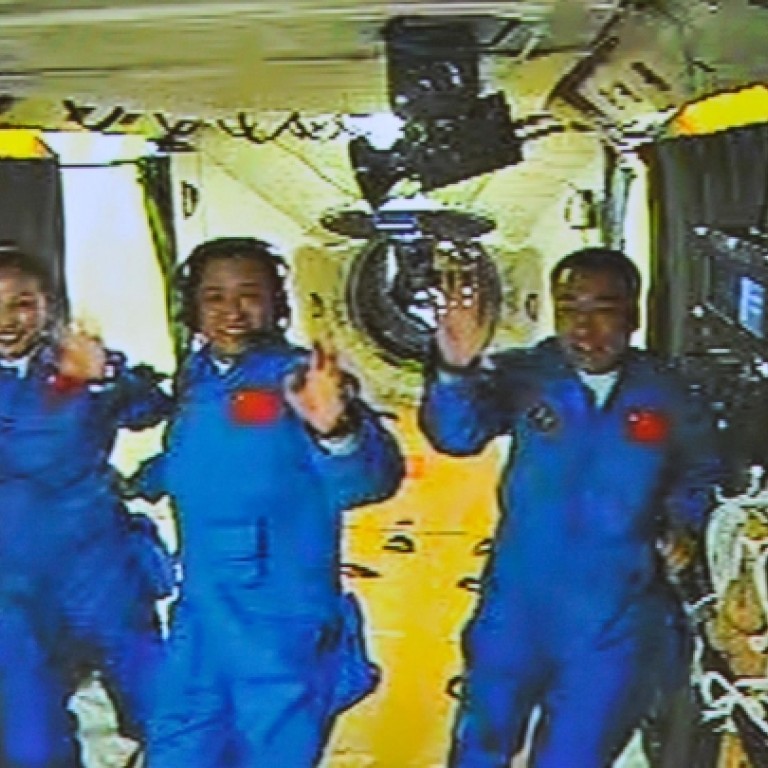
Untelevised space docking signals focus on Mars and asteroids
Beijing scales back TV coverage of space mission as it looks to develop a Mars exploration project and study asteroids
Shenzhou X docked with the orbiting Tiangong I yesterday and three Chinese astronauts who had spent nearly two days in the cramped spacecraft moved into the much more spacious and well-equipped space module to live and work for 12 days.
As the second and final crew to use Tiangong I, they will spend two days longer in the space module than the crew of Shenzhou IX in June last year.
Among their tasks, on what has been described as the first service flight in the Chinese manned space programme, will be replacing interior cladding and scientific experiments.
The public relations highlight of the current mission will be a space lecture by female astronaut Major Wang Yaping to primary and high school pupils at a time yet to be announced.
Yesterday's docking manoeuvre was the fifth carried out by China and the first not broadcast live by state media.
A China Central Television staff member said that they had been told by the authorities to cut back on their coverage of the mission because the increasing number of Chinese space flights would see docking and other procedures become routine and repeated media bombardment would quickly bore the public.
"We have been told that CNN and the BBC have not had live broadcasts of routine docking at the International Space Station, and that as the state broadcaster in China shouldn't make too much of a fuss about docking from now on," the CCTV staff member said. "The scaling down of media coverage also signals the maturity of the Chinese space programme."
Xinhua said yesterday's docking was guided entirely by computer, and went without any technical glitches.
The astronauts all got suited up and then donned helmets in Shenzhou X's re-entry module in case of mishap.
They closely monitored the final approach and docking with cameras and onboard instruments, but the procedure was completed without the need for any human intervention.
Qi Faren , the retired chief designer of Shenzhou spacecraft, told China Space News on Wednesday that China was considering launching a satellite to Mars in 2015.
He said that the failure of Russia's Fobos-Grunt explorer, which was carrying a small Chinese Martian satellite, Firefly I, when it crashed on launch last year, had left Chinese space authorities with little choice but to develop their own Martian exploration project.
Qi said China had now built antennas powerful enough to direct a flight to Mars.
The lack of very large antennas to pick up the extremely weak radio signals sent back to earth by spacecraft on long-distance flights had been the main reason that China had joined the Russian project, he said. But now, with the completion of three giant antennas in Shanghai and Xinjiang , Chinese spacecraft could set off on a journey to Mars on their own.
He also said that Chinese space authorities were planning a flight to an asteroid.
Unlike the US plan to land on an asteroid, the Chinese spacecraft would fly with the asteroid for extensive observation.

